#othniel charles marsh
Text
THE ONE AND ONLY OTHNIEL CHARLES MARSH

For Throwback Thursday we will be discussing one of the most important people in paleontology: Professor Othniel Marsh. He was born in Lockport, New York to a modest family but he was lucky enough to be the nephew of George Peabody.

Peabody paid for his formal education at Yale College where he received a bachelor's degree in...art?

He did receive a Berkeley Scholarship so he went on to study geology, mineralogy, and chemistry.

Fun fact, in 1866 he was appointed the professor of vertebrate paleontology at Yale University making him the very first professor of paleontology in the U.S.

The Peabody Museum of Natural History was founded and he was made one of the first curators.

Marsh went on to write 400 scientific papers, naming about 500 new species of fossil animals including many of our Morrison favorites:
Stegosaurus

Brontosaurus

Apatosaurus
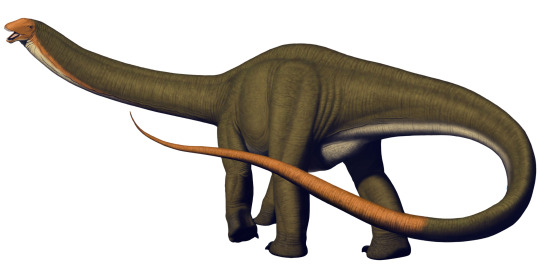
Allosaurus

Atlantosaurus

Camptosaurus

Ceratosaurus

Diplodocus

Dryosaurus

and Nanosaurus.
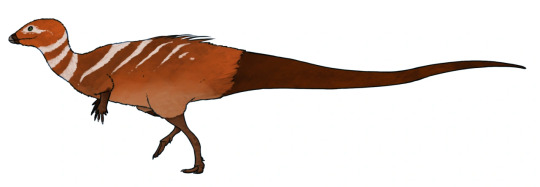
He also named several of their families: Allosauridae, Camptosauridae, Diplodocidae, and Stegosauridae as well as four famous suborders: Ceratopsia, Ceratosauria, Ornithopoda, Stegosauria and Theropoda.
He also had several named in his honor but only Marshosaurus has stood the test of time.

#paleontology#dinosaur#fossils#geology#allosaurus#Othniel Charles Marsh#stegosaurus#diplodocus#apatosaurus#ceratosaurus#dryosaurus#brontosaurus#bone wars#george peabody#yale university#yale peabody museum of natural history
15 notes
·
View notes
Text
Dinofact #63
In 1879, Othniel Charles Marsh discovered and named Coelurus, and gave the type species the name Coelurus fragilis. Over the next year, he discovered more fragmentary remains of the dinosaur, naming a second species Coelurus agilis. However, it has been found that most of the fragmentary remains he found, including the material for C. agilis and the material originally used for naming the species, came from the same dinosaur, whose skeleton was scattered throughout the quarry. Today, the only Coelurus species considered valid is C. fragilis.
Source: Wikipedia [1], [2]
#dinosaur#dinosaurs#paleontology#othniel charles marsh#othniel c. marsh#coelurus#coelurus fragilis#coelurus agilis#c. fragilis#c. agilis#fun facts#trivia#dinosaur trivia#dinosaur fun facts#27th#october#2022#october 27th#october 2022#october 27th 2022
15 notes
·
View notes
Text
sometimes when you find out about a historical rivalry the best thing you can do is look it up on ao3 and be comforted that there are indeed stories written about them fucking
#rambles#this post is about american paleonthologists edward drinker cope and othniel charles marsh please derail
6 notes
·
View notes
Text

N-Nodosaurus
Taxonomic Group:
Nodosaurus is a genus within the family Nodosauridae, part of the suborder Ankylosauria. These dinosaurs are known for their armored bodies and belong to the group commonly referred to as nodosaurids.
Size and Weight:
Nodosaurus was a medium-sized dinosaur, estimated to be about 5 to 6 meters (16 to 20 feet) in length and weighing approximately 1 metric ton (2,200 pounds).
Time Period:
Nodosaurus lived during the Late Cretaceous period, approximately 112 to 97 million years ago.
Location:
Fossils of Nodosaurus have been discovered in North America, specifically in regions such as Kansas and Wyoming, USA.
Diet:
As a herbivore, Nodosaurus primarily fed on low-lying vegetation. Its teeth and jaw structure suggest it was well-adapted to consuming a variety of plants, including ferns and cycads.
Distinctive Features:
Nodosaurus is characterized by its heavily armored body, with bony plates and spikes providing protection against predators. It lacked the tail club seen in some other ankylosaurs.
Head Structure:
The skull of Nodosaurus was relatively small compared to its body, with a beak-like structure at the front for cropping plants. Its teeth were simple and leaf-shaped, suitable for processing plant material.
Movement and Behavior:
Nodosaurus was a quadrupedal dinosaur, moving on all four legs. Its robust limbs and low-slung body indicate it was a slow-moving creature, relying on its armor for defense rather than speed.
Initial Discovery:
The genus Nodosaurus was described by Othniel Charles Marsh in 1889, based on fossils discovered in the Dakota Sandstone Formation. It was one of the first ankylosaurs to be named.
Skin and Fossil Finds:
While skin impressions of Nodosaurus are rare, skeletal remains, including armor plates, vertebrae, and limb bones, have been found. These fossils provide valuable insights into its anatomy and defensive adaptations.
Social Behavior:
There is limited direct evidence of the social behavior of Nodosaurus. However, like other nodosaurids, it is believed to have been a solitary or small-group animal, relying on its armor for protection rather than social structures for defense.
#dinosuars#dinosaur#paleontology#fossils#paleontologist#dinosaurs#allosaurus#paleo#extinct animals#dimetrodon#parasaurolophus
52 notes
·
View notes
Text


Bone Wars (1998) & Two Tiny Claws (1999) by Brett Davis
Cover illustrations by Bob Eggleton
Bone Wars (1998)
Montana, 1876. Othniel Charles Marsh, one of the two top paleontologists in the world, in the state's Judith River fossil beds, doing what he does best: digging up the bones of dinosaurs. Montana is a big state, but Marsh can't rest easy. Edward Drinker Cope, his biggest rival, and the other top paleontologist in the world, is also in the area, and there simply aren't enough bones for both of them, leading them to play dirty tricks. And time itself is against them: the fierce snows of winter are on the way and, rumor has it, so is Sitting Bull, fresh from his triumph at little Big Horn.
Another complication: two foreign scientists are also competing for the bones. One says he's from Sweden, the other says he's from Iceland. One of them enlists Cope to help him, while the other befriends Marsh.Marsh and Cope don't want the fossils to leave the country, so they decide to bury the hatchet and work together to outwit the visitors. This turns out to be harder than they thought. The foreign scientists possess amazing technology, but that's because they are much more foreign than they claimed. They don't just want to take the bones out of the country -- they're fighting over who will get to take them clean off the planet....
Two Tiny Claws (1999)
Montana, 1907. Barnum Brown of the American Museum of Natural History aims to dig up fossils of Tyrannosaurus Rex, the most fearsome carnivore ever to walk the Earth. He dismisses rumors of earlier paleontologists encountering both resurrected dinosaurs and aliens from space. He's more worried by reports that notorious bank robber Luther Gumpson is in the neighborhood. But then Brown discovers that the aliens are real, they're back, and they're mad. And he'll see more than the bones of T-Rex, when he encounters the awesome ground-pounding predator in the flesh....
#book cover art#cover illustration#Bob Eggleton#Paleontology#dinosaurs#Bone Wars#Two Tiny Claws#Brett Davis#alternative history#historical fiction#historical sci-fi
9 notes
·
View notes
Note
🦕

Sauropoda :
Ze oldest known unequivocal sauropod dinosaurs are known from the Early Jurassic.[5] Isanosaurus and Antetonitrus were originally described as Triassic sauropods,[6][7] but their age, and in the case of Antetonitrus also its sauropod status, were subsequently questioned.[8][5][9] Sauropod-like sauropodomorph tracks from the Fleming Fjord Formation (Greenland) might, however, indicate the occurrence of the group in the Late Triassic.[5] By the Late Jurassic (150 million years ago), sauropods had become widespread (especially the diplodocids and brachiosaurids). By the Late Cretaceous, one group of sauropods, the titanosaurs, had replaced all others and had a near-global distribution. However, as with all other non-avian dinosaurs alive at the time, the titanosaurs died out in the Cretaceous–Paleogene extinction event. Fossilised remains of sauropods have been found on every continent, including Antarctica.[10][11][12][13]
The name Sauropoda was coined by Othniel Charles Marsh in 1878, and is derived from Ancient Greek, meaning "lizard foot".[14] Sauropods are one of the most recognizable groups of dinosaurs, and have become a fixture in popular culture due to their impressive size.
Complete sauropod fossil finds are extremely rare. Many species, especially the largest, are known only from isolated and disarticulated bones. Many near-complete specimens lack heads, tail tips and limbs!?
8 notes
·
View notes
Text

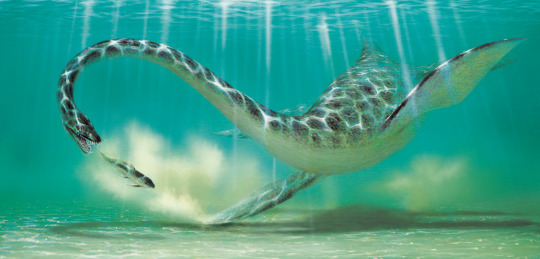



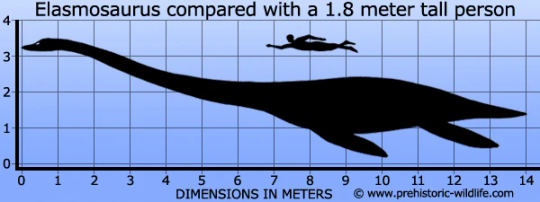
Elasmosaurus platyurus
(temporal range: 80.5 mio. years ago)
[text from the Wikipedia article, see also link above]
Elasmosaurus (/ɪˌlæzməˈsɔːrəs, -moʊ-/;[1]) is a genus of plesiosaur that lived in North America during the Campanian stage of the Late Cretaceous period, about 80.5 million years ago. The first specimen was discovered in 1867 near Fort Wallace, Kansas, US, and was sent to the American paleontologist Edward Drinker Cope, who named it E. platyurus in 1868. The generic name means "thin-plate reptile", and the specific name means "flat-tailed". Cope originally reconstructed the skeleton of Elasmosaurus with the skull at the end of the tail, an error which was made light of by the paleontologist Othniel Charles Marsh, and became part of their "Bone Wars" rivalry. Only one incomplete Elasmosaurus skeleton is definitely known, consisting of a fragmentary skull, the spine, and the pectoral and pelvic girdles, and a single species is recognized today; other species are now considered invalid or have been moved to other genera.
Measuring 10.3 meters (34 ft) in length, Elasmosaurus would have had a streamlined body with paddle-like limbs, a short tail, a small head, and an extremely long neck. The neck alone was around 7.1 meters (23 ft) long. Along with its relative Albertonectes, it was one of the longest-necked animals to have lived, with the second largest number of neck vertebrae known, 72, 4 less than Albertonectes. The skull would have been slender and triangular, with large, fang-like teeth at the front, and smaller teeth towards the back. It had six teeth in each premaxilla of the upper jaw, and may have had 14 teeth in the maxilla and 19 in the dentary of the lower jaw. Most of the neck vertebrae were compressed sideways, and bore a longitudinal crest or keel along the sides.
The family Elasmosauridae was based on the genus Elasmosaurus, the first recognized member of this group of long-necked plesiosaurs. Elasmosaurids were well adapted for aquatic life, and used their flippers for swimming. Contrary to earlier depictions, their necks were not very flexible, and could not be held high above the water surface. It is unknown what their long necks were used for, but they may have had a function in feeding. Elasmosaurids probably ate small fish and marine invertebrates, seizing them with their long teeth, and may have used gastroliths (stomach stones) to help digest their food. Elasmosaurus is known from the Pierre Shale formation, which represents marine deposits from the Western Interior Seaway.
46 notes
·
View notes
Note
I have some information Juno and Hyancinth might like.
Have you heard of
The Bonr Wars?
If not, then let me enlighten you.
The Bone Wars was a "conflict" between rival paleontologists Edward Drinker Cope and Othniel Charles Marsh that lasted between 1877 and 1892 where both parties tried to out-paleontologist each other by any means necessary, which often lead to theft, bribery, destruction of fossils, espionage, sabotage, and much, much more.
Fortunately, The Bone Wars did have a happy ending, just not for Cope and Marsh, with neither party being crowned the winner, intead they both ran out of money, were socially outcast, and shunned by the scientific community; The one's who had the happy ending were the members of the scientific and paleontologic communities, as the rivals' frivoulous spending, ungodly amount of digging, and countless nights writing resulted in 136 new species of dinosaurs being discovered.
In fact, some of the most well known dinosaurs were discovered during The Bone Wars. Dinosaurs like Triceratops, Allosaurus, and Stegosaurus just to name a few.
Here's the wikipedia article on The Bone Wars:
https://en.m.wikipedia.org/wiki/Bone_Wars
THATS SO FUCKING WILD
46 notes
·
View notes
Text

Nanosaurus
Nanosaurus — рід динозаврів з клади Neornithischia, що жив приблизно 155-148 мільйонів років тому, в пізньому юрському періоді. Його скам’янілості відомі з формації Моррісона на південному заході США. Типовий і єдиний вид, Nanosaurus agilis, був описаний і названий Отніелем Чарльзом Маршем (Othniel Charles Marsh) у 1877 році.
Повний текст на сайті "Вимерлий світ":
https://extinctworld.in.ua/nanosaurus/
#nanosaurus#dinosaur#jurassic#late jurassic#usa#north america#jurassic period#art#dinosaurs#paleoart#paleontology#prehistoric#animals#science#extinct#illustration#fossils#digital art#палеоарт#палеонтологія#ukraine#ukrainian#article#animal art#сша#динозавр#ua#українська мова#україна#мова
60 notes
·
View notes
Text
Agathaumas, the Lost Ceratopsian

I've talked about The Lost World (1925) a few times on this blog, partly due to it being the very first feature length film depicting dinosaurs, and partly due to how effective it is as a snapshot of dinosaurs during the early 1900s.
Anyone who has seen the film will note that there are actually two species of ceratopsians portrayed. The first is the more famous Triceratops, as seen in the photo above on the left.
The one on the right resembles a Triceratops, but looks a little...different. The nasal horn is a lot longer, the frill exhibiting more spikes, and it's hide more heavily armoured.
As you might've guessed, this isn't Triceratops. In fact...it's a dinosaur that may not have even existed.
Meet Agathaumas sylvestris ("marvelous forest-dweller"), one of the oldest described ceratopsians ever recorded. In fact, it was "discovered" before ceratopsians were even properly described.
youtube
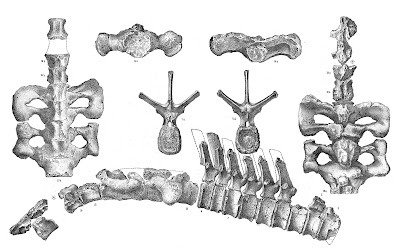
The original partial remains (AMNH 4000) were discovered in 1873 by Fielding Bradford Meek and Henry Martyn Bannister near Black Butte and Bitter Creek in Wyoming. They were eventually sent to the famous paleontologist Edward Drinker Cope who initially described it as a hadrosaur due to how fragmentary the fossils were. It wasn't until his rival Othniel Marsh described Triceratops did Cope recognize it as a ceratopsian in 1889.
And here's where things get...interesting.

As anybody interested in paleontological topics should know, Cope and Marsh were locked in a fierce rivalry called the Bone Wars, where the two competed to find the most specimens and describe the most species. In a series of publications ("The horned dinosauria of the Laramie" from the American Naturalist) Cope initially didn't recognize the name "ceratopsid" as a proper family name (believing that the namesake Ceratops wasn't related), and even argued for his own classification: Agathaumids. Furthermore, he grouped 4 other of his discoveries together in this family: Monoclonius, Dysganus, Manospondylus, and Claorhynchus.
Despite his efforts, Cope's gambit ultimately failed when in 1907, Agathaumas's validity was challenged by John Bell Hatcher. Due to the fragmentary nature of the fossils, it was later reclassified as a pseudonym for Monoclonius. This isn't anything unique for species described in the Bone Wars due to the rush to name new animals. And to rub salt in the wound, all of the members of the Agathaumids were considered to be nomen dubium (doubtful name) while Marsh's name Ceratopsids was chosen as the classification for the group (The Ceratopsia).

Armor for Agathaumas – Incertae Sedis (wordpress.com)
So where does that leave Agathaumas and the original remains? Nowadays, while the remains are still considered a holotype, it's widely considered to be a centrosaur. The painting by Charles R. Knight as seen from above came from the species Agathaumas sphenocerus, later reclassified as a species of Monoclonius, which is now believed to have been described from specimens of Styracosaurus and Centrosaurus. The reconstruction would later be used for the animal's depiction in the 1925 The Lost World. The genus as a whole is now typically regarded as synonym for Marsh's dinosaur, Triceratops (in a bit of irony).
So while now considered nomen dubium, Agathaumas is still rather interesting due to how a once notable dinosaur fell victim to science marching on, and how it got caught in the center of a notorious rivalry.
A big thanks to the I Know Dino podcast for covering this. Feel free to check them out cause they have a lot of good material for dinosaur enthusiasts. Also feel free to check out any of the articles cited in the post if you want some additional reading, and this great video by E.D.G.E from YouTube.
Agathaumas | The Horned Dragon That Never Was - YouTube
#agathaumas#ceratopsian#ceratopsid#edward drinker cope#othniel march#bone wars#charles r. knight#dinosaur#dinosaurs#paleontology#the lost world 1925#styracosaurus#centrosaurus#triceratops
45 notes
·
View notes
Text
Random Palaeontology Facts #3
One of the most infamous events in the history of fossil hunting is the Bone Wars, a 20 year long rivalry between two reputable palaeontologists that left both men destitute, yet resulted in an unprecedented amount of new species being discovered.

Before the Bone Wars, Othniel Charles Marsh and Edward Drinker Cope were close friends, to the extent where they were naming species after each other. However, over time the two grew apart due to their intense differences, yet they remained friends.
In 1868, Cope described yet another new species, Elasmosaurus Platyurus, in a scientific paper.
There was just one problem.
Soon after the publishing of this paper, Marsh arrived to inspect the specimen and concluded that he had put the head on the wrong end.
The two debated this for some time, until Joseph Mellick Leidy (Cope’s former mentor) was summoned to settle the dispute, who ultimately sided with Marsh.

Cope was horrified at his mistake, immediately recalling all copies of the paper and distributing a revised version instead.
In June of 1872, Cope started collecting fossils in Wyoming and Kansas, an area Marsh considered his territory leading to deterioration of their relationship. Relations became outright hostile after it was discovered that two of Marsh’s men were being bribed by Cope.
The following years were full of theft, further bribery, attempts to ruin each other’s reputations and the destruction of fossils and dig sites, in some cases even using dynamite.
By the time of Cope’s passing in 1897, both of the men were completely broke. He had been forced to sell his fossil collection and rent out his house in order to survive, while Marsh had to take out a mortgage and ask Yale for a salary.
Even in death, Cope antagonised Marsh, donating his skull to science in order to find out who had the larger brain (at the time, brain size was thought to correlate with intelligence). Marsh never accepted the challenge.
The Bone Wars harmed the public perception of American palaeontology for decades, and some destroyed fossils could very well have been the only ones of their kind.
It wasn’t all bad though, as the quarrel between the two men defined the new field of science and discovered some of the first complete skeletons ever. Between the two of them, they found 136 new species of dinosaurs (56 by Cope, 80 by Marsh) including some of the most famous such as Allosaurus, Stegosaurus, Triceratops, Diplodocus and Coelophysis, the only dinosaur that’s been to space.
5 notes
·
View notes
Text
Throwback Thursday: The Curious Case of Brontosaurus
Everyone has heard of Brontosaurus. It's one of the top five dinosaurs kids learn. However, do you know about the rocky past of this fan favorite? Brontosaurus was discovered in 1879 by Othniel Charles Marsh (or at the very least, his crew) during the height of the infamous Bone Wars. It was collected from Como Bluff, Wyoming and it was a nearly complete skeleton. All it was missing was its head (a typical, sauropod problem).


At this time, the Morrison Formation was at the center of the Bone Wars conflict so Marsh was feeling rushed and pressured to publish on this new find before his rival, Edward Drinker Cope, had the opportunity to publish something new first. Even though he hoped to recover a skull, Marsh opted to publish without.
Now, the Yale Peabody Museum couldn't display a headless skeleton so they decided to sculpt one. As I mentioned before, sauropod skulls are not easy to come by. The damn things are so small compared to the rest of the body and so fragile that the pop off and disarticulate. The only skulls that had been found with any substance was Camarasaurus and a few Brachiosaurus fragments. I mean, look at the size difference between Camarasaurus and Diplodocus skulls:


(The Diplodocus skull is significantly smaller. You can see it below and to the right of the Camarasaurus in the top photo).
So, all they had to really go off of was Camarasaurus and Brachiosaurus so they made a composite of the two that ended up looking like this:
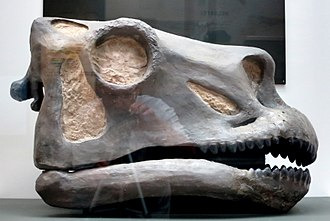
Horrifying, isn't it? I mean, those two sauropods aren't even closely related to Brontosaurus.
In 1903, Elmer Riggs argued that Brontosaurus was not different enough from Apatosaurus to warrant a different genus. A different species, sure, but not genus. Since Apatosaurus was named first, it had priority therefore Brontosaurus excelsus became Apatosaurus excelsus. However, the general public missed the memo so Brontosaurus stayed in common literature.
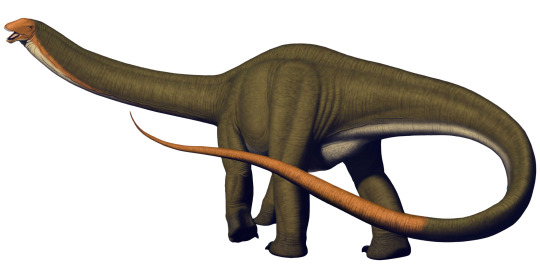
In 2015, an extensive study was done on the diplodocid branch (check out my Monday Musings post on sauropod phylogeny if unfamiliar with sauropod families) and they concluded that Brontosaurus was legit. Usually, names don't get revived to keep things from getting confusing but Brontosaurus survived nearly 100 years of existential crises so its popularity in the general populace allowed for a revival.
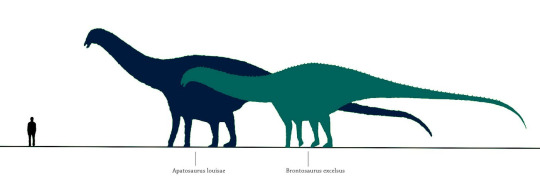
And that is the short history of how Brontosaurus existed then didn't exist and then existed again. Tune in tomorrow to learn about Brachiosaurus altithorax.
73 notes
·
View notes
Text
Dinofact #42
Apatosaurus's name means "deceptive lizard" in Greek. Othniel Charles Marsh gave the dinosaur this name because Apatosaurus's chevron bones resemble those of mosasaurs more than they do those of other dinosaurs.
Source: wikipedia
#dinosaur#dinosaurs#paleontology#apatosaurus#othniel charles marsh#othniel c. marsh#bones#mosasaurs#mosasaur#mosasauroidea#fun facts#trivia#dinosaur trivia#dinosaur fun facts#5th#october#2022#october 5th#october 2022#october 5th 2022
10 notes
·
View notes
Text

D-Diplodocus
1. Classification: Diplodocus belongs to the sauropod group of dinosaurs, which are characterized by their long necks, long tails, and massive bodies.
2. Size: Diplodocus was one of the longest dinosaurs, with estimates suggesting it could reach lengths of up to 80-90 feet (24-27 meters). Despite its length, it was relatively lightweight for its size, weighing between 10 to 20 tons.
3. Period: Diplodocus lived during the Late Jurassic period, approximately 155 to 145 million years ago.
4. Habitat: Fossil evidence suggests that Diplodocus inhabited what is now North America, particularly in the area that is now the western United States, including Colorado, Montana, Utah, and Wyoming.
5. Diet: As a herbivore, Diplodocus primarily fed on plants. Its long neck allowed it to reach high vegetation, as well as low-lying plants.
6. Anatomy: Diplodocus had a long, whip-like tail, which it might have used for defense or communication. Its neck was also extremely long, consisting of at least 15 vertebrae.
7. Skull and Teeth: The skull of Diplodocus was small compared to its body, with peg-like teeth that were likely used to strip leaves from branches.
8. Movement: It is believed that Diplodocus moved on all fours, but there is some evidence suggesting it could rear up on its hind legs to reach higher vegetation.
9. Discovery: The first Diplodocus fossils were discovered in 1877 by Samuel Wendell Williston in Colorado. The genus name, Diplodocus, was given by paleontologist Othniel Charles Marsh in 1878, meaning “double beam” in reference to its double-beamed chevron bones located on the underside of its tail.
10. Cultural Impact: Diplodocus has become one of the most well-known dinosaurs, often featured in museums, literature, and media. One of the most famous specimens, nicknamed “Dippy,” has been a central exhibit in the Natural History Museum in London.
18 notes
·
View notes
Text

STEGASAURUS
first discovered 1874 by Othniel Charles Marsh
lived during the jurassic
colorado's official state dinosaur
fun facts:
translated to english from ancient greek means "roof lizard", because when we first discovered stegosaurus' back in 1874 (and after studying it) we thought their "plates" were laying on their back. kind of like a roof tile-ish. then something happened (i dont know when..) and we thought they were standing up but horizontally, instead of vertically like now. then we thought it was vertically but one line and then finally what its like now, vertically in two lines, or so we think. we still dont know why they had the plates but the two theories that is most common is that they are for mating and heat regulation.
something that we thought in the 1870 too was that they had two brains. one in the head and one by the hip. reason for this theory being that they had a big space between hip and spine. now we think that the space was used for glycogen storage.
3 notes
·
View notes
Text

For day 20 of our 8th anniversary celebrations of I Know Dino, we’re highlighting our next big milestone episode, which was all about the Bone Wars, the rivalry in the 1800s that ruined two paleontologists but made #dinosaurs mainstream
In episode 250, we dove deep into Othniel Charles Marsh and Edward Drinker Cope, two men who hunted for fossils in the Wild West of the U.S., who spied on each other and sabotaged each other’s finds, and who together named 144 species of dinosaurs
You can still listen at https://podcasts.apple.com/us/podcast/sabrina-riccis-hardcore-bone-wars/id960976813?i=1000449372556
2 notes
·
View notes